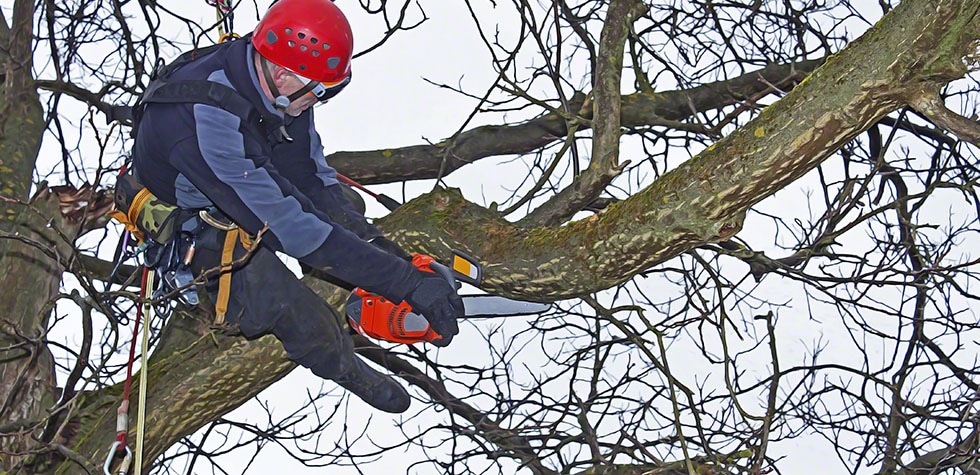Trees are vital to our environment, offering beauty, shade and contributing to biodiversity. However, like any living organism, they require care and attention throughout the year. Additionally, regular pruning, offered by tree services, is a crucial aspect of tree care that promotes health, safety, and aesthetic appeal.
Tree Care in Different Seasons
From the awakening of spring to the dormancy of winter, each season brings unique challenges and opportunities for tree care. By understanding the needs of your trees in each season, you can ensure their health, growth, and longevity.
Spring Care: Nurturing New Growth
As trees emerge from their winter dormancy, spring is a crucial time for their growth and health. During this period, trees begin to sprout new leaves and, in some cases, flowers. This new growth requires a lot of energy and resources, making adequate watering essential. The soil around the trees should be kept moist, but care must be taken to avoid overwatering, which can lead to root rot or other issues.
In addition to water, trees may benefit from fertilization in the spring. Fertilizers can provide essential nutrients that support the vigorous growth typical of this season. However, it’s important to use the right type and amount of fertilizer, as over-fertilization can be harmful. It’s often best to perform a soil test to determine the specific needs of your trees.
Summer Care: Managing Heat and Drought
Summer presents a different set of challenges, primarily heat and potential drought. During this time, trees experience significant water loss through their leaves. To combat this, deep but infrequent watering is recommended. This watering technique encourages the roots to grow deeper into the soil, searching for moisture, which in turn makes the tree more resilient to drought conditions.
It’s also important to monitor the health of your trees during the summer. Signs of stress, such as wilting leaves or discolored foliage, should be addressed promptly. In some cases, providing additional water or shade can help alleviate these issues.
Fall Care: Preparing for Winter
Fall is the time for trees to prepare for the coming winter. As the temperature drops and daylight hours shorten, trees begin to slow their growth and shed their leaves. This is an ideal time for maintenance such as pruning. Removing dead or weak branches can prevent damage during winter storms and improve the tree’s overall structure and health.
Applying mulch around the base of the tree is another key aspect of fall care. Mulch helps to retain soil moisture and regulates soil temperature, providing a buffer against the cold. It also adds nutrients to the soil as it decomposes, further benefiting the tree.
Winter Care: Protecting Trees in Dormancy
Winter is a dormant period for trees. While growth ceases, it’s important to continue caring for them. The main concern during winter is the damage that can be caused by cold weather, snow, and pests. Regular inspections can help identify and address issues like broken branches. Prompt removal of these branches can prevent further damage or injury.
Protecting the base of the tree from extreme cold is also vital, especially for young or sensitive trees. Wrapping the trunk with tree guards can prevent frost cracks and protect against rodents and other pests that may cause damage during the winter.
The Importance of Regular Tree Pruning
Tree pruning is a crucial part of tree care. It involves cutting away dead or overgrown branches. This helps trees grow healthy and strong. Pruning is not just about making trees look good. It also improves their health and safety. Regular pruning is important for all trees, whether they are in a garden, a park, or along a street.
Pruning Techniques Matter
The way you prune a tree is important. It’s not just about cutting branches. You have to cut them in the right way. This means making clean cuts at the right place on the branch. If pruning is done wrong, it can harm the tree. It can lead to diseases or weak growth. So, it’s often best to have tree cutting services Kensington do the pruning.
Promoting Tree Health Through Pruning
Pruning plays a vital role in maintaining the health of trees. When you remove dead or diseased branches, you prevent the spread of disease and decay. It’s like removing a bad part to keep the whole tree healthy. Pruning also helps in improving air circulation and sunlight exposure to the inner parts of the tree. This is important for the tree’s growth and overall health.
Enhancing Safety with Regular Pruning
Safety is another reason why regular pruning is important. Overgrown branches can be dangerous. They can fall and hurt people or damage property. Especially in areas where people walk or sit under trees, it’s important to keep branches trimmed. Pruning also helps in maintaining a clear view for drivers on streets. This makes roads safer for everyone.
Improving Tree Shape and Appearance
Pruning also helps in shaping trees. This makes them look more attractive. A well-pruned tree has a balanced shape. It looks healthy and well-cared for. This is important in gardens and parks where people want to enjoy the beauty of nature. Aesthetics, or the beauty of trees, is a big part of why people enjoy trees.
Encouraging Fruit and Flower Production
For fruit trees, pruning is even more important. It encourages the growth of new branches. These new branches often produce more fruit. Pruning helps in getting better quality and larger fruits. It also helps with flowering trees. Pruning encourages more blooms. This makes the tree more beautiful when it flowers.
Best Time for Pruning
The best time for pruning depends on the type of tree. Generally, late winter or early spring is a good time. This is before new growth starts. It’s easier to see the branches and make good cuts. Some trees are best pruned at other times of the year. It’s important to know the best time for each type of tree.
Pruning Young Trees
Pruning is not just for older trees. Young trees also benefit from pruning. It helps them develop a strong structure. This makes them healthier as they grow. Pruning young trees is about guiding their growth. This way, they grow into strong and healthy mature trees.
Conclusion
Caring for trees is a year-round commitment that requires understanding and attention to the specific needs of each season. From spring’s nurturing new growth to winter’s protective measures, each season plays a crucial role in a tree’s life cycle. Regular pruning emerges as an essential practice, enhancing tree health, safety, and appearance, and encouraging fruitful and floral abundance. In certain situations, particularly when trees become hazardous or unhealthy, the expertise of a professional tree removal companies Bethesda may be necessary. By following these guidelines and seeking professional assistance when needed, we can ensure that our trees remain robust, healthy, and beautiful, contributing to a greener, more vibrant world.



